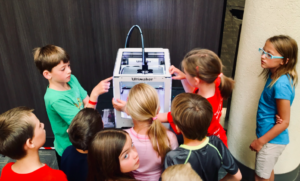To start, project-based learning (PBL) is a teaching method in which students learn by actively engaging in meaningful, real world projects. Students gain knowledge by working for extended periods of time to investigate and respond to an engaging and complex prompt.
What is PBL based on?
The framework of high-quality project-based learning is dependent on seven major characteristics. The first characteristic is that it should primarily focus on a large open-ended question, problem, or challenge. It should also consider the student’s academic knowledge and understanding. It needs to be inquiry based as well as use communication, collaboration, and creativity.

Also, student choice should be incorporated into the process. There should be opportunities to provide feedback and revision of the project. Finally, it’s required that students present their problems, research process, methods, and results in order to acknowledge their effort.
According to the Buck Institute of Education, there are also seven essential elements for the Gold Standard PBL. In other words, there is a top-tier project design for project-based learning. The key elements are: a challenging problem or question, a sustained inquiry, authenticity, student voice and choice, reflection, critique and revision, and a public product. All of this combined will ensure the highest quality of project-based learning for students and ensure the proper usage of PBL.
Why does it Matter?
There are several ways that PBL transforms a student’s approach to education. For example, it provides real world relevance so students can learn how to solve problems that are important to them and their communities. By witnessing the impact of a project, it gives students a sense of purpose and a glimpse into how they can change the world. Project-based learning will help students master skills deemed necessary for career readiness such as critical thinking, problem-solving and effective collaboration. Also, it will help students retain content longer and have a deeper understanding of what they’re learning.

PBL can also be beneficial for teachers. The repetitive nature of regular classroom learning can demotivate stressed teachers who are struggling to make education more exciting. Project based learning can help with this as it changes the role of the teacher in the classroom. Teachers will now provide oversight and guidance, while giving students the resources they need to define their own learning. Additionally, teachers will be able to express their own creativity and have the opportunity to be more innovative when formulating project concepts. A student-centered approach to learning will prevent the teachers from falling into a rut and avoid boredom in the classroom.
This method of learning is gaining traction across the country. Schools are rapidly implementing this technique due to its interdisciplinary approach and unique style of handling education. Overall, students and teachers will find that project-based learning is worthwhile, as it is engaging and challenges everyone to step out of their comfort zone and try something new.
Written by Anumita Basani

